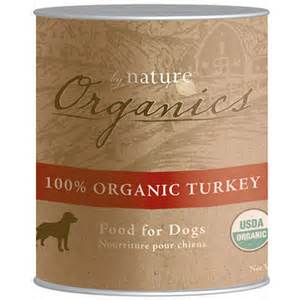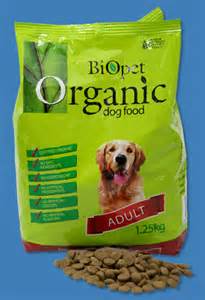Know How To Read The Pet Food Labels

Understanding the pet food label will help you select the dog food that is healthy and which dog food is bad for your pet. It is the responsibility of every pet parent to know which is the best food prior to feeding their pets. You should become aware of his nutritional needs and become familiar with reading and understanding the pet label on the food you buy. This will help your puppy and adult dog to live a longer and healthy life.
In this article the following topics will be covered:
- Who establishes label requirements
- The pet food label explained
- The differences between organic and non-organic pet food
- Non-organic pet food
- Organic pet food
- Changing your pet’s diet
- Conclusion
With this information pet owners should be able to understand what the product label is saying on the pet foods they buy in the pet store and the difference between organic and non-organic pet food.
Who Establishes Label Requirements
The Association of American Feed Control Officials (AAFCO) develop regulations for livestock and companion food labels. They publish regulations annually. Buyers beware, just because a product meets their standards, does not mean the food is good or is the best to feed your puppy or dog. You must compare the food labels and read the ingredients list to make this determination.
The label on pet food provides a great deal of information about the product inside the bag, box, can or carton. To interpret this information properly, it will be necessary to know and understand the various parts of the label copy and regulations involved.
Ingredients Label topics.
The Pet Food Label Explained
Below is a brief summary of each portion of the label printed on the package. Be sure you understand it so when you go to the pet store to buy food you’ll know what the label is telling you.
Manufacture’s Information
Each label will show the name and address of the manufacturer, packer or distributor of the pet food. If there should be more than one location where the food is produced, the label will show the manufacturer’s principal address. You can contact them if you want to know more about how the food was processed.
Net Weight
The net weight statement must be shown in the principal display panel. It shall conform to all U.S. Fair Packaging and Labeling Act and the associated regulations. The figures for the net weight shall be in the lower one-third of the display panel, with the size of the numbers being determined by the size of the package. The net weight must include weight in metric conversion.
Nutritional Adequacy Statement
The label must show whether or not the product provides a complete and balanced nutrition, and if it is adequate for all life stages or just a particular life stage of a dog or cat. This tells the owner what nutrition is included in the food and if you need to add additional supplements into your pets food so they receive sufficient vitamins and minerals.
Toll Free Consumer Information Number
This is not a required statement; some manufacturers may include an 800 number on the label. This is important because you can learn more about the product you are feeding your pet directly from them. Providing this number makes is easy for you to find out.
Ingredients List
The ingredients must be listed in order by weight. It is important to know this information. Manufacturers may advertise that their product is best when in reality it’s not. By looking at the ingredients list you can determine if the food is best for your pet to eat. Become familiar with the ingredients that are bad for the health of your pet and need to avoid them.
In the final analysis, it’s up to the pet owner to know and understand the pet food labels on the food products you buy and serve to your pets. It’s important that your pet receives the proper nutrition on a daily basis or their health might be impacted. Remember, dogs like meat and need lots of protein. Be sure that meat is the first ingredient listed on the label.
Ingredients Label index.
The Differences Between Organic and Non Organic Pet Food
When you go to the pet store, basically, there are two types of food and they are organic and non-organic pet food. You need to know the differences between organic and non-organic pet food. You should only buy the best food for your dog that will provide a balanced diet so your pet will live a long and healthy life. Feeding your pet with good or bad food will impact their health and what they eat is up to you.
Ingredients Label index.
Non-Organic Pet Food

There are some manufactures that produce good quality and healthy non-organic cat and dog food. You have to read the label to determine which is the healthiest. Do not be confused with the bag and the advertising that is on it as it can be misleading.
Not all cat and dog foods are alike. In most cases, non-organic pet food is usually cheaper than organic and has less nutrition that is good for your pet in the long run.
The reason being is the USDA (United States Department of Agriculture) policies govern organic pet food. What most pet owners should become familiar with is the label printed on the package. This is where you will find which food is actually best for your pet verses another manufacturer.
You will find the ingredients that were used in processing of the cat or dog food on the label. The label information printed on the package is regulated by AAFCO (The Association of American Feed Control Officials).
For cat and dog food, the first ingredient should be meat and not meat by-products or fillers. By-products and fillers are not healthy for your pets and should not be fed to them. The reason they are used is because they are cheap to the manufacturer, to help keep the price of the food down. All manufacturers must list the ingredients in order by weight.
Look also for the type of preservatives being used in the process. Avoid BHA, BHT, ethoxyquin, artificial flavors and colors or flavoring agents. These can cause harmful effects on your pet’s health over time. The old saying is true, if it’s not good for humans, it is not good for your pet.
Ingredients Label index.
Organic Pet Food
Organic pet food does have some regulations which are governed by the USDA. There are three levels of organic pet food and they are: 100% organic, organic, and made with organic ingredients.
100% Organic
In order for a manufacturer to advertise its product as “100% Organic” it must have all of the ingredients certified as organic in the process. Manufacturers can display the USDA Organic Seal on the packaging and advertising. If you should see this seal on the package its informing you that the ingredients are organic.
Organic
A product certified as “organic” its ingredients must be 95% organic. Manufacturers can display the USDA Organic Seal on its packaging and advertising. This seal is the same as for 100% organic. If the packaging does not say 100% organic, then it’s 95%.
Made With Organic Ingredients
Products advertised as “made with organic ingredients” must have 70% of the ingredients used in the process as organic. It cannot display the UDSA Organic Seal but, can display the logo of the certification body that approved them.
Other Organic Food
Products with less than 70% of organic ingredients cannot advertise this to consumers but can only mention them in the ingredient statement.
Generally, organic food is healthier for your pet. Also, you will be using less food when feeding your pets because of the high quality ingredients being used in the process. Organic food is more expensive than non-organic food. Just like non-organic food, organic foods are not the same. Look at the label and the list of ingredients. There you will find the quality of the organic ingredients being used in the process. This should help you in selecting which product to buy.
Ingredients Label topics.
Changing Your Pets Diet From One Food To Another

Before you can feed your pet with an organic food diet, especially when you have been feeding him non-organic foods, you must change his diet over a period of time. Here is how it works:
- Days 1-4: Mix 25% of the new food with 75% of his current food.
- Days 5-8: Mix 50% of the new with 50% of the old.
- Days 9-12: Mix 75% of the new with 25% of the old.
- Day 13: 100% of the new food.
While you are doing this observe if your pet should have any reactions to the new food like diarrhea. If you see this, then slow down the process. Always consult with your veterinarian if your pet displays other signs.
Ingredients Label topics.
Conclusion
Feeding your pet and with the type of food you buy is always up to you. What you feed your pet can make a big difference on its health and how long you pet will live. We hope this information about the differences between organic and non-organic pet food and how to read the food label has been helpful so you can make the proper choices on the foods you buy when feeding your pet.
In the final analysis, it’s really up to what you can afford. Remember, you control your pets overall health. This is especially true of the foods you serve him to be consumed. Your pets health is always in your hands.
As an Amazon associate, I earn from qualified purchases.
Quick & Easy Guide to a Healthy Dog (Quick & Easy (TFH Publications))
Raw Dog Food: Make It Easy for You and Your Dog
Food Pets Die For: Shocking Facts About Pet Food
Go back to Dog.Dog Luxury Beds home page.
Ingredients Label index.
